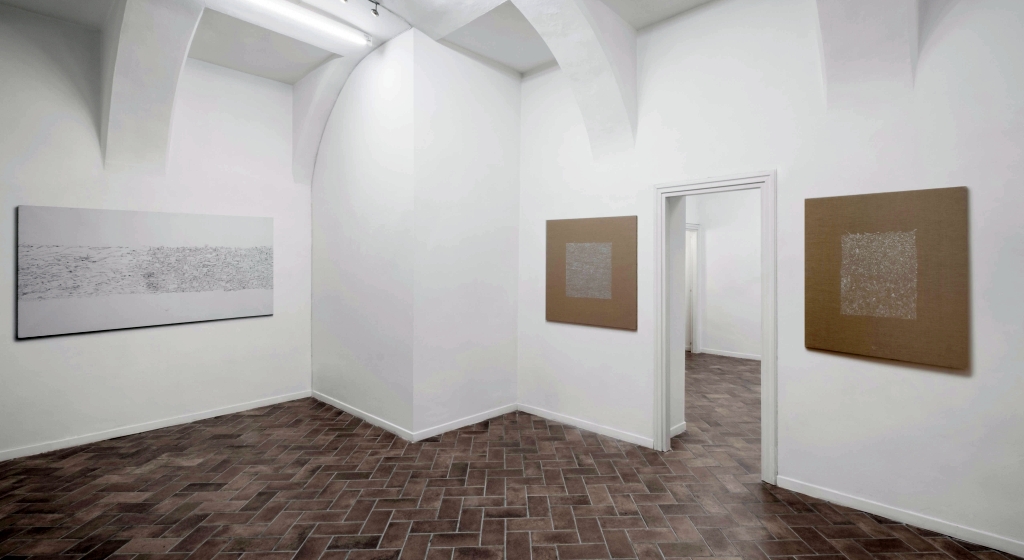E3 ARTE CONTEMPORANEAE3 ARTE CONTEMPORANEA
«…Fin dalla fine degli anni ‘60, La Pietra si occupa di mappare l’ambiente che lo circonda, ne esamina comportamenti e caratteristiche, ne evidenzia le contraddizioni e ne indaga il quotidiano, fin nelle piccole sfumature, in un atteggiamento che non va nella direzione dell’arte ideologica di molti colleghi, ma agisce su un piano più concreto e meno utopistico, che bada alla sostanza delle questioni, alla praticità delle ipotesi e delle proposte tese a portare l’uomo a riappropriarsi del proprio microcosmo, a ridefinire le relazioni sociali a modificare all’occorrenza la propria focale visiva. Uscito dall’esperienza del Gruppo del Cenobio, che gli lascerà in eredità l’inconfondibile impiego del segno come mezzo espressivo, La Pietra, di formazione architetto, inizia il proprio percorso nel tema della Territorialità, oggetto di analisi e soggetto del suo fare arte fino ai nostri giorni. Il Territorio è per La Pietra tutto ciò che costituisce il vivere quotidiano: dal concetto di “casa” fino alle stratificazioni sociali e culturali di un luogo, dall’importanza del genius loci al dialogo necessario tra lo spazio urbano e quello privato. Il giardino è un hortus conclusus, uno spazio protetto, recintato non per isolarlo ma per isolarvisi, un luogo dello spirito in cui cercarsi e ritrovarsi; uno spazio che rappresenta anche un ruolo simbolico, sorta di eden terrestre, costruito a immagine e somiglianza del paradiso celeste, luogo sacro, perché è soprattutto nella natura che l’uomo ha percepito per secoli la presenza del divino». (Simona Bartolena)
«The concept of “a public garden”, intended as a natural environment arranged in an urban setting, has its origin in modern times: it originated during the Enlightenment era, in a period in which there was a new idea about collective space design. Before that, gardens were found on the grounds of mansions and palaces and were rarely, if ever, opened to the general population. In fact, the realization of public gardens was a fundamental step in urban modernization. On one hand, this has led to a progressive diffusion of green spaces in cities and to the custom of visiting them by citizens when they have free time; while on the other hand, gardens, transformed into public spaces, have changed in certain aspects, losing important characteristics and changing their original role, remaining trapped in the chaos and growing rythmn of a metropolitan existance. “Architecture persists in the building of houses, streets, neighborhoods, and cities introducing ‘greenery’, intended as an element capable of carrying out or ‘resolving’ different functions” observes Ugo La Pietra, a refined investigator of the dynamics of everyday life. “Everyone forgets that gardens, the opposite of buildings, have their own lives and their own development and in time have always won out. In the past, importance was given to certain developed areas, gardens dedicated solely to the divinities, like certain protected gardens located in the heart of a natural setting, in which man felt the presence of the divine. Today, green spaces in cities have to compete with traffic, parking lots, and are suffocated by asphalt. Often you find only shrubbery surrounded by just a few inches of earth”». (Simona Bartolena)
